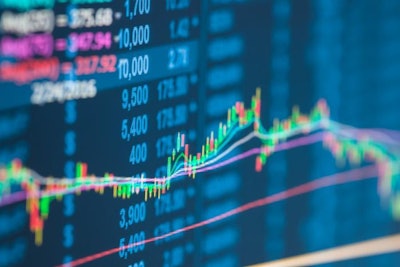
Acquisitions helped ForFarmers grow its compound feed volume in the first quarter of 2019, but the cooperative saw small profit growth and a strong decline in earnings before interest, taxes, depreciation, and amortization (EBITDA).
Acquisitions completed in the second half of 2018 – Tasomix and Voeders Algoet, in particular – drove total feed volume growth, ForFarmers said, but it saw a volume decline in the Netherlands and the United Kingdom.
In the first half of 2019, the company expects a decline in underlying EBITDA of between 30% and 35% and an underlying net profit decline of between 55% and 60%.
“The development of underlying EBITDA in the first quarter of 2019 is disappointing, although in line with expectation for the first half-year as announced last March,” said Yoram Knoop, CEO of ForFarmers. “The positive contribution of the acquisitions could not compensate the like-for-like decline in the results. Like-for-like, less compound feed was sold in all species and in all countries except Germany. The volume decline was particularly due to the decline at the end of 2018 in cattle and pig herds in the Netherlands, the country with the largest contribution in our results.
“In general, in challenging market circumstances in the countries in which we are active, we managed to gain customers compared to the fourth quarter of 2018. The temporary unfavorable purchasing positions, however, led to a strong decline of underlying EBITDA. The purchasing risk procedure is currently being further assessed to determine how to better bear the impact of intense volatility of raw material prices on results in the future. Because of the impact of the temporary unfavorable purchasing positions on the results of the first half year, we expect underlying EBITDA for the full year 2019 to be lower than in 2018.”
Price developments in the agricultural sector
Average prices for milk, meat and eggs in Europe were slightly lower in the first quarter of 2019 than in the comparative quarter last year.
Average milk prices were relatively stable in the first quarter of 2019, at a slightly higher level than the five-year average.
At the end of 2018, average pig prices started to rise rapidly. In the first quarter of 2019, prices were still below the five-year historic average, while they are already much higher. The sharp increase in pig prices is attributable to, among others, a growing demand from China where the pig herd has substantially decreased due to the outbreak of African swine fever.
The average price for eggs remained fairly stable in the first quarter of this year, albeit at a lower level than the five-year average. Prices for broilers were unstable in the past quarter and lower than the five-year average. As of the end of the first quarter, prices for broilers have risen rapidly.
Development consolidated results
Total Feed volume increased. This was fully attributable to the contribution of the acquisitions (all of which were closed in the second half of 2018), which mitigated by a like-for-like decline in volume in the Netherlands and the United Kingdom. Total compound feed volume rose faster (percentagewise) than that of Total Feed because of the acquisitions, whilst the like-for-like decline (percentagewise) was larger than that of Total Feed. Gross profit showed a small increase.
Total operating costs increased more than gross profit (in percentage terms), due to the acquisitions and a like-for-like rise. The main reasons were higher energy and logistics costs as well as integration costs with respect to the acquisitions, which were absent in the comparative quarter last year.
Excluding the impact of the acquisitions, ForFarmers served more customers in the first quarter of 2019 than in the fourth quarter of 2018. This was mainly the result of attracting new customers on the back of the successful introduction of the poultry concept Apollo.















